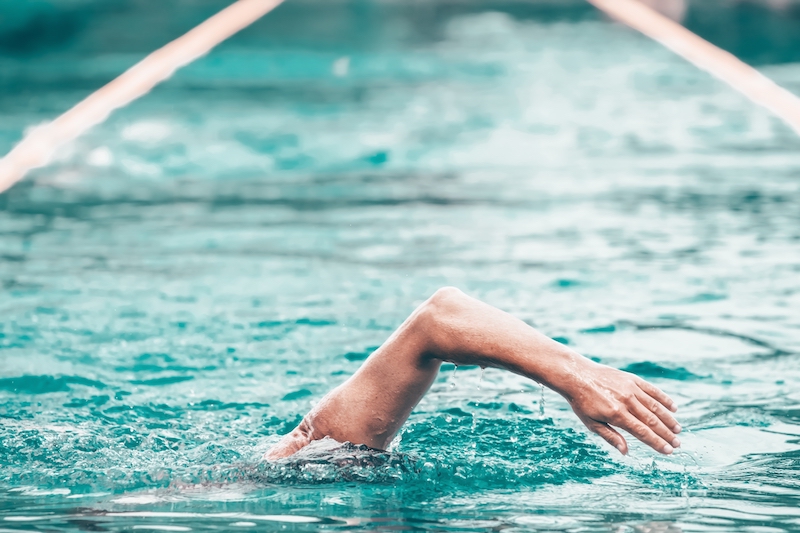Sore Shoulders Are Common In Swimming,
But Physical Therapy Can Get You Back In Line
Swimming is a great form of exercise because it strengthens multiple regions of the body and improves both flexibility and endurance. In addition, the lack of impact on joints makes it a safe choice for avoiding lower-body injuries that are common with land-based exercises. Water polo, which involves swimming, passing a ball, and other active movements, features many of the same attractive characteristics as swimming and is commonly regarded as an excellent workout. However, neither sport is risk-free, and an injury called shoulder impingement is quite common in both.
A Quick Review of the Anatomy
The shoulder is made up of three bones: the upper arm bone (humerus), the shoulder blade (scapula), and the collarbone (clavicle). The humerus and scapula are surrounded and connected by the rotator cuff, a group of muscles and tendons that keeps the shoulder stable and allows the ball-and-socket movements of the joint. There is also a fluid-filled sac called the bursa between the rotator cuff and a bony prominence on the top of the scapula (acromion), and this bursa provides a cushion during movement.
What Exactly is Impingement?
In shoulder impingement syndrome (SIS), the tendons of the rotator cuff become compressed—or “impinged”—as they pass through the narrow space beneath the acromion. Over time, this causes the tendons to become irritated and inflamed, eventually leading to bothersome symptoms like swelling, tenderness, loss of strength, restricted shoulder movement and pain that’s most common at rest, when moving the shoulder overhead, and when sleeping.
If You Use Your Shoulder, You Might Get SIS
SIS is most common in individuals that regularly perform lots of overhead activities like golfers, swimmers, and baseball and tennis players, as well as painters and construction workers. Competitive swimmers are at a particularly high risk for shoulder impingement syndrome because of the repetitive overhead motions involved in most strokes, which can cause continuous wear and tear on the structures of the shoulder. It’s estimated that year-round competitive swimmers cover 10,000–24,000 meters per day, and more than half of these athletes suffer from shoulder pain.
Water polo players also swim large distances on a regular basis, while also passing and shooting a ball, which are overhead motions. As a result, these players are frequently affected by SIS and other shoulder problems, with one study finding that the rate of shoulder pain is about 80% in these athletes.
Physical therapy for swimmers and water polo players with SIS
If SIS develops, physical therapy is strongly recommended as the safest and fastest route to recovery. Physical therapy for SIS typically consists of the following:
- Activity modification/functional training
- Stretching exercises
- Strengthening exercises
- Hands-on (manual) therapy
- Posture education
The effectiveness of physical therapy for SIS has been consistently confirmed through published research, including a recent study called a systematic review and meta-analysis. This study reviewed the findings of 11 high-quality studies called randomized-controlled trials that compared physical therapy to surgery for patients with SIS. Results showed that there were no significant differences between patients in measures of pain or function up to 10 years later, which suggests that physical therapy can lead to comparable outcomes to surgery while also avoiding the high costs and potential risks of a surgical procedure.
Whether you’re a swimmer or water polo playing dealing with shoulder pain, or if your shoulder is bothering you for some other reason, Bacci & Glinn Physical Therapy can help you get back on track.

